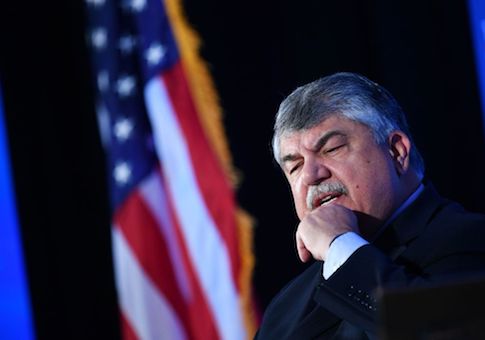Experts say a new AFL-CIO report on executive pay contains misleading data designed to exaggerate income inequality.
The 2019 Executive Paywatch report found the average S&P 500 CEO-to-worker pay ratio to be 287-1. America's largest union used suspect data to inflate the divide between workers and their bosses. The study includes part-time and global workers and also uses the mean compensation for CEOs, rather than the median figure, which some experts argue creates a more accurate comparison.
American Enterprise Institute scholar Mark J. Perry says the AFL-CIO used deceitful methods in their study in an attempt to bolster their policy demands. By incorporating part-time and global workers, the median compensation for S&P 500 workers appears lower. The report then compared those workers' compensation to only the highest-paid executives in the United States. That approach distorts the picture of equality in 2019, according to Perry.
"They are trying to come up with sensationalized numbers that exaggerate and inflate statistics by comparing apples to oranges," Perry told the Washington Free Beacon. "It allows them to make the case that their members deserve a raise."
The AFL-CIO did not respond for comment about the study and its methodology.
Perry, a professor of economics and finance at the University of Michigan, compared the measured CEOs to professional athletes, arguing that both have high levels of income because they're competing—and succeeding—in a huge market at the prime of their careers.
"The highest athletes get paid more over time," he said in the midst of an NBA free agency period that has players signing contracts worth up to $190 million. "They're in the global market like these CEOs."
Taking from Fortune 500 CEOs would do little to improve the lives of rank-and-file American workers, according to Perry. In his breakdown of the new Executive Paywatch report, Perry found that a hypothetical redistribution of the $7.25 billion total compensation of S&P 500 CEOs in 2018 would give their 104.3 million rank-and-file workers a raise of 3 cents per hour.
Critics of labor unions argue that outrage over income inequality from labor groups is insincere, pointing to the large paychecks of organized labor leaders. More than 620 union executives earned compensation above $200,000 in 2018, which was the average pay of U.S. company chief executives that same year, according to the Bureau of Labor Statistics.
The Center for Union Facts (CUF) found that in 2017, some union presidents made as much as $600,000 in compensation. In 2016, union presidents made more money than the average private sector chief executive. Charlyce Bozzello, Communications Director for CUF, said these union leaders are hypocritical when it comes to greed. She pointed out that their compensations derives from dues and fees taken from a worker's paycheck, rather than from company profits.
"Union officials frequently lambaste business leaders for their corporate greed. Yet, the most recent data shows that last year, over 130 union employees made over $300,000 on their members' dime," Bozzello told the Free Beacon. "Some even brought home a gross salary of over half a million dollars. If that's not hypocrisy, I'm not sure what is."
Labor unions have donated more than $12.5 million to 2020 Democratic presidential candidates over the course of their careers, with income inequality being a key campaign subject for candidates such as Sens. Bernie Sanders and Elizabeth Warren. Perry said studies like that of the AFL-CIO should be seen as political maneuvering, rather a reflection of economic reality.
"[Income inequality] is becoming political, but at its core, it's an economic issue," he said.
